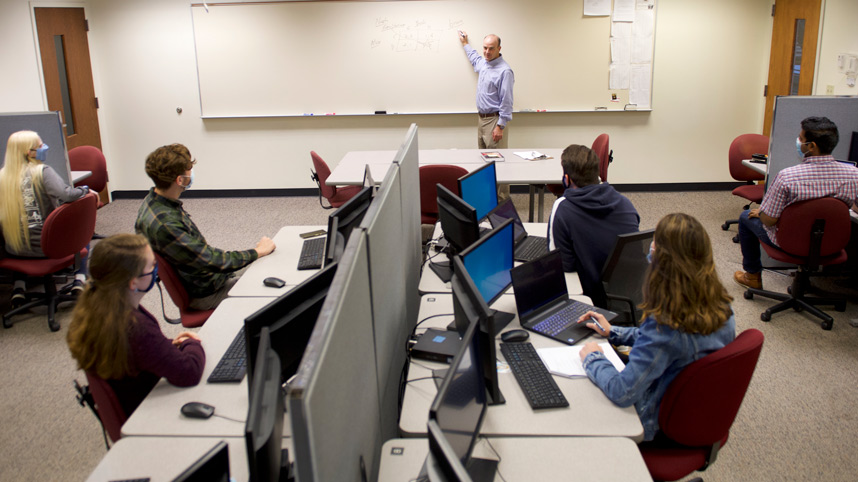Programs and curriculum for students to participate in real world cyber training – Programs and curriculum for students to participate in real-world cyber training are crucial for preparing the next generation of cybersecurity professionals. This isn’t just about memorizing theoretical concepts; it’s about diving deep into practical applications and mimicking real-world scenarios. Imagine students not just learning about network security but actively identifying and mitigating vulnerabilities in simulated networks, analyzing real-world cyberattacks, and developing critical thinking skills to tackle emerging threats.
This approach fosters practical experience and prepares students for the dynamic demands of the cybersecurity field.
This comprehensive guide explores the essential elements of effective real-world cyber training programs, from defining the training approach to designing engaging curriculum modules and evaluating student performance. We’ll also delve into the crucial role of industry collaboration and addressing emerging trends in cybersecurity to ensure students are future-ready.
Defining Real-World Cyber Training Programs
Real-world cyber training is a crucial component of a robust cybersecurity strategy. It moves beyond the theoretical and simulated environments often found in traditional training, immersing participants in practical scenarios and challenges that mirror actual cyberattacks. This approach emphasizes practical application and hands-on experience, making it significantly more effective than purely theoretical knowledge. This blog post delves into the key aspects of defining and implementing such training programs.Real-world cyber training transcends the limitations of simulated environments by incorporating real-world attack vectors, vulnerabilities, and the unpredictable nature of human error.
It prioritizes experiential learning, fostering critical thinking and problem-solving skills necessary to confront complex cyber threats in dynamic situations. This emphasis on practical application prepares individuals to handle real-world incidents with confidence and proficiency.
Key Characteristics of Real-World Cyber Training
Real-world cyber training programs differ significantly from theoretical or simulated exercises. The distinguishing features lie in the level of realism, practical application, and the environment in which the training takes place. This realism allows for a more effective learning process, mimicking real-world challenges and complexities.
Practical Application and Hands-On Experience
The core of effective cyber training lies in the ability to apply theoretical knowledge to practical scenarios. This hands-on approach allows learners to experience the challenges and complexities of a cyberattack firsthand. Participants are encouraged to develop and refine their problem-solving and decision-making skills in real-time. A practical, hands-on approach helps in identifying vulnerabilities and potential weaknesses in systems.
Types of Real-World Cyber Training Environments, Programs and curriculum for students to participate in real world cyber training
Real-world cyber training environments can be categorized based on the level of realism and the resources available. These environments range from controlled lab settings with real-world systems to simulated environments mimicking actual attack surfaces.
Cybersecurity training programs are crucial for students, and hands-on experience is key. Real-world scenarios are essential for building practical skills, and finding programs that mirror these situations is vital. To fuel your inspiration, check out these insightful quotes to help you navigate the challenges and triumphs in your cybersecurity journey: 21 quotes to inspire you. These motivational thoughts can help you stay focused on your goals and excel in your chosen cybersecurity path.
- Controlled Lab Environments: These labs are designed to simulate real-world systems and networks. They allow participants to practice techniques, tools, and procedures in a safe, controlled environment. For example, a lab may mimic a company’s network with vulnerable systems, where participants can practice ethical hacking techniques and incident response procedures.
- Simulated Attack Environments: These environments replicate real-world attacks and threat scenarios. They expose participants to the challenges of responding to sophisticated attacks and handling complex situations. This can involve simulating phishing attacks, malware infections, or denial-of-service attacks.
- Ethical Hacking Competitions: Competitions provide a challenging environment where participants can test their skills and knowledge against other cybersecurity professionals. These competitions often involve real-world vulnerabilities and scenarios, pushing participants to their limits and encouraging the development of quick-thinking and problem-solving abilities.
Comparison of Real-World Cyber Training Approaches
Different approaches to real-world cyber training exist, each with its strengths and weaknesses. The choice of approach depends on the specific learning objectives and the resources available.
Looking for programs and curriculum that let students experience real-world cyber training? It’s crucial for future security professionals. Understanding the financial aspects of online marketing is equally important, like navigating a social media advertising pricing guide – how much should you pay? This helpful guide can help you grasp the costs involved. Ultimately, these programs and curriculum give students the skills to tackle real-world cyber threats effectively.
| Approach | Description | Strengths | Weaknesses |
|---|---|---|---|
| Hands-on Labs | Participants work with real or simulated systems to identify and address vulnerabilities. | High practical application, immediate feedback, and development of problem-solving skills. | May require specialized equipment and expertise to set up. |
| Simulated Attacks | Participants respond to simulated cyberattacks to hone incident response procedures. | Realistic representation of attack scenarios, ability to practice in a controlled environment. | May not fully replicate the complexity and unpredictability of real-world attacks. |
| Capture the Flag (CTF) Competitions | Participants compete to solve security challenges and gain access to systems. | Encourages teamwork, problem-solving, and knowledge application. | May not directly translate to real-world scenarios; the focus is on solving puzzles rather than real-world incident response. |
Curriculum Structure and Content

Real-world cyber training programs must go beyond theoretical knowledge. Students need practical experience simulating real-world attacks and defending against them. This curriculum is designed to provide a comprehensive understanding of cybersecurity concepts and hands-on skills needed to tackle contemporary threats. It emphasizes practical application, allowing students to apply their knowledge in a safe and controlled environment.This curriculum is structured around modules that progressively build upon each other, covering essential cybersecurity topics from foundational concepts to advanced techniques.
The learning objectives within each module are clearly defined, enabling students to gauge their progress and understanding. The curriculum also addresses emerging threats and vulnerabilities, ensuring students are equipped to face future challenges in the ever-evolving cyber landscape.
Cybersecurity training programs for students are crucial, offering hands-on experience. It’s inspiring to see how companies are prioritizing work-life balance, as exemplified by Adam Bullock’s recent paternity leave, adam bullock paternity leave. This demonstrates a supportive environment, which is a positive reflection for future programs that can further enhance real-world cyber training for the next generation of security professionals.
Sample Curriculum for Real-World Cyber Training
This curriculum provides a structured learning path for students aspiring to become proficient cybersecurity professionals. The modular approach facilitates focused learning and allows for practical application of knowledge.
Modules and Learning Objectives
| Module | Topic | Learning Objectives | Duration |
|---|---|---|---|
| Module 1: Introduction to Cybersecurity | Fundamental cybersecurity concepts, threat actors, vulnerabilities, attack vectors, and security controls. | Students will define and describe key cybersecurity concepts. They will identify common attack vectors and vulnerabilities. Students will be able to articulate different types of threat actors and their motivations. | 5 days |
| Module 2: Network Security | Network architecture, protocols, common network vulnerabilities (e.g., port scanning, denial-of-service), firewalls, intrusion detection systems (IDS), and network security best practices. | Students will analyze network architectures and identify potential vulnerabilities. They will configure and manage firewalls. Students will learn to use intrusion detection systems (IDS) to detect malicious activity. Students will apply network security best practices to protect systems. | 7 days |
| Module 3: Security Operations and Incident Response | Incident response procedures, threat hunting, security information and event management (SIEM), log analysis, and practical incident response exercises. | Students will develop and implement incident response plans. Students will conduct threat hunting activities. They will utilize SIEM and log analysis tools to identify malicious activity. Students will execute practical incident response exercises in a controlled environment. | 10 days |
| Module 4: Cloud Security | Security considerations in cloud environments, cloud-based threats, security best practices, cloud access security brokers (CASBs), and security orchestration, automation, and response (SOAR) tools. | Students will identify and address security risks in cloud environments. Students will evaluate cloud security best practices. Students will implement cloud access security brokers (CASBs) and security orchestration, automation, and response (SOAR) tools for incident response in cloud environments. | 7 days |
| Module 5: Advanced Persistent Threats (APTs) | Advanced persistent threat (APT) tactics, techniques, and procedures (TTPs), advanced attack methods, threat intelligence, and defensive strategies against APTs. | Students will analyze APT TTPs and identify attack patterns. Students will assess the effectiveness of defensive strategies against APT attacks. Students will develop threat intelligence gathering techniques. | 5 days |
| Module 6: Practical Application and Capstone Project | Students will apply their learned skills in a realistic cyber environment, participating in simulated attacks and defending against them. They will conduct a capstone project that applies their knowledge to solve a specific cybersecurity challenge. | Students will demonstrate proficiency in defending against various cyberattacks. Students will complete a cybersecurity project that showcases their practical skills and problem-solving abilities. | 10 days |
Addressing Emerging Threats and Vulnerabilities
This curriculum proactively addresses emerging threats and vulnerabilities by incorporating current research, threat intelligence, and evolving attack methods into the modules. For example, Module 5 specifically focuses on APTs, which are a significant and constantly evolving threat. The practical application module further strengthens the curriculum by exposing students to realistic cyber scenarios, preparing them to deal with the dynamic nature of cyberattacks.
Student Engagement and Practical Application
Bringing real-world cyber threats into the classroom demands a proactive approach to student engagement. This involves more than just theoretical knowledge; it necessitates practical application, simulations, and evaluation methods that mirror the dynamic nature of cybersecurity challenges. The focus should be on fostering critical thinking and problem-solving skills, equipping students with the tools and knowledge needed to thrive in this ever-evolving field.A successful cyber training program requires active participation from students.
This is not just about passive listening or rote memorization; it’s about actively engaging with complex scenarios and learning through hands-on experience. Creating a stimulating and supportive learning environment is key to fostering a genuine passion for cybersecurity among students.
Strategies for Fostering Student Engagement
Active learning techniques, like role-playing and group projects, are crucial. Students should be encouraged to collaborate and share their insights, fostering a sense of community and shared responsibility within the learning environment. Encouraging debate and discussion, even on controversial topics, helps students develop critical thinking and the ability to articulate their reasoning. Providing opportunities for students to present their work and receive constructive feedback is also vital.
Integrating Practical Exercises and Simulations
Realistic simulations are essential to bridge the gap between theoretical concepts and real-world applications. These simulations should replicate common cyber threats, allowing students to experience the impact of attacks firsthand. The simulations should be progressively challenging, starting with basic scenarios and escalating to more complex ones as students gain experience. This allows students to learn from mistakes in a safe environment and build confidence in their abilities.
Case studies of real-world cyberattacks should be incorporated, illustrating the human element and the potential consequences of security breaches.
Methods for Evaluating Student Performance
Evaluation methods should assess not only technical skills but also critical thinking, problem-solving, and communication abilities. A comprehensive approach includes practical assessments, such as hands-on exercises, simulations, and presentations of security analyses. Performance in these activities should be evaluated based on the accuracy, efficiency, and creativity of the solutions presented. Feedback should be constructive and focus on areas for improvement.
Assessment tools should be tailored to the specific learning objectives and be designed to assess the overall understanding of the subject matter, including identifying vulnerabilities and implementing countermeasures.
Incorporating Industry-Standard Tools and Technologies
Introducing industry-standard tools and technologies into the curriculum is crucial. This ensures that students gain practical experience with the software and systems used by professionals in the field. Examples include various network analysis tools, penetration testing frameworks, and cybersecurity information systems. Hands-on experience with these tools allows students to understand their functionality and potential applications.
The Role of Mentorship and Guidance
Mentorship plays a vital role in real-world cyber training. Experienced professionals can provide guidance, share insights, and offer valuable feedback. Mentorship programs should connect students with industry professionals, providing opportunities for networking and learning from practical experience. Mentors should be approachable and supportive, fostering a positive learning environment that encourages questions and critical thinking. This should extend beyond technical skills to include soft skills, such as communication, teamwork, and time management.
The guidance should be customized based on the individual student’s needs and learning style.
Assessment and Evaluation
Evaluating the effectiveness of real-world cyber training programs is crucial for continuous improvement and ensuring students gain practical skills. A robust assessment strategy should encompass both formative and summative evaluations to gauge student understanding and identify areas needing further development. This approach allows for timely adjustments to the curriculum and delivery methods, ultimately enhancing the learning experience and skill acquisition.Comprehensive assessment methods go beyond traditional testing to incorporate practical exercises, case studies, and simulations that mirror real-world cyber threats.
This allows students to apply their knowledge in dynamic and challenging situations, building confidence and proficiency in handling real-world scenarios. The results of these assessments provide valuable insights into the strengths and weaknesses of the program, facilitating targeted improvements for future iterations.
Practical Exercises
Practical exercises provide an immediate and valuable measure of student understanding and skill application. They involve hands-on tasks that simulate real-world cyber scenarios, such as penetration testing, incident response, or vulnerability analysis. These exercises allow instructors to assess not only the students’ knowledge of theoretical concepts but also their ability to apply those concepts in a practical setting.
Detailed feedback on each exercise is essential for targeted learning and improvement.
Case Studies
Case studies provide a powerful platform for analyzing real-world cyber incidents. Presenting students with actual scenarios allows them to develop critical thinking, problem-solving, and decision-making skills. Students can explore various approaches to addressing the incident, evaluating the effectiveness of different strategies, and understanding the impact of decisions. Effective case studies include detailed descriptions of the incident, relevant context, and clear learning objectives.
Hands-on Challenges
Hands-on challenges offer an engaging way to assess student skills. These challenges can involve simulated phishing attacks, malware analysis, or network security assessments. The challenges should progressively increase in complexity, mirroring the evolution of real-world cyber threats. A critical component of these challenges is the ability to evaluate not only the correct solution but also the thought process and reasoning behind it.
The results provide valuable insights into student abilities to identify vulnerabilities and develop appropriate countermeasures.
Assessment Methodologies and Evaluation Criteria
The table below Artikels different assessment methods and their corresponding evaluation criteria. These criteria provide a structured framework for assessing student performance and ensure a consistent and objective evaluation process.
| Assessment Method | Description | Evaluation Criteria |
|---|---|---|
| Practical Exercises | Hands-on tasks simulating real-world scenarios. | Accuracy (correctness of solutions), Efficiency (timeliness and resource management), Problem-solving skills (approach to challenges and ability to identify solutions). |
| Case Studies | Analysis of real-world cyber incidents. | Critical thinking (ability to analyze information and identify key factors), Problem-solving (development of effective solutions), Decision-making (justification and rationale behind choices), Communication skills (clarity and conciseness of presentations and reports). |
| Hands-on Challenges | Simulated cyber threats and scenarios to evaluate practical application. | Technical proficiency (application of knowledge in real-time scenarios), Creativity (development of innovative solutions), Adaptability (ability to adjust to changing circumstances), Critical thinking (ability to analyze situations and evaluate potential solutions). |
Industry Collaboration and Resources: Programs And Curriculum For Students To Participate In Real World Cyber Training
Bridging the gap between theoretical cyber training and real-world application requires strong industry partnerships. Collaboration with cybersecurity professionals provides invaluable insights into current threats, vulnerabilities, and best practices. This section details strategies for leveraging industry expertise to enhance the curriculum’s effectiveness.
Partnering with Industry Professionals
Industry professionals, including security analysts, ethical hackers, and incident responders, possess a wealth of practical experience. Integrating them into the training design and delivery process offers several benefits. Expert input can tailor the curriculum to reflect the latest industry trends and challenges. This includes incorporating real-world case studies and scenarios. Experienced professionals can also mentor students, providing invaluable guidance and feedback.
Accessing Industry Resources and Networks
Access to industry resources and networks is crucial for real-world cyber training. These resources can include: access to simulated attack environments, vulnerability databases, and cybersecurity tools. Such access allows students to practice their skills in realistic scenarios. Networking opportunities with industry professionals facilitate internships, job shadowing, and future career connections.
Integrating Real-World Data and Case Studies
Incorporating real-world data and case studies is essential for making the training relevant and engaging. Current events, recent breaches, and emerging threats can be integrated into the curriculum. This approach allows students to understand the impact of real-world incidents and the steps taken to mitigate them. For example, a training module on phishing attacks could include an analysis of a recent high-profile phishing campaign.
Detailed analysis of the attack’s techniques and the lessons learned from it enhances learning and fosters critical thinking.
Utilizing Available Resources
Several resources can support real-world cyber training initiatives. Government agencies, cybersecurity organizations, and industry associations often offer training materials, workshops, and certifications. These resources can provide additional depth and breadth to the curriculum. For instance, the SANS Institute offers a vast library of cybersecurity training materials, from introductory courses to advanced certifications. Other organizations like the OWASP (Open Web Application Security Project) provide valuable resources for web application security training.
Using these resources allows the curriculum to be more comprehensive and up-to-date.
Partnerships with Cybersecurity Organizations
Partnerships with cybersecurity organizations can significantly enhance the training curriculum. These partnerships can provide opportunities for guest lectures, workshops, and mentoring programs. They can also lead to joint development of new training modules. For example, a partnership with a local cybersecurity firm could result in a module focused on incident response procedures. This collaboration brings real-world expertise into the curriculum and strengthens the training program.
Addressing Emerging Trends
Cybersecurity is a dynamic field, constantly evolving to meet new threats and challenges. Staying ahead of the curve requires a proactive approach to training, one that anticipates emerging trends and equips students with the skills needed to navigate the ever-changing landscape. This section details how to incorporate these emerging trends into the curriculum, ensuring graduates are prepared for the future of cyber warfare.The curriculum must adapt to address the rapid evolution of cyber threats, including the increasing sophistication of attacks, the rise of new technologies, and the growing interconnectedness of systems.
This adaptation is crucial for creating a resilient workforce capable of defending against sophisticated attacks.
Current and Emerging Trends in Cybersecurity
The cybersecurity landscape is shaped by several key trends. These include the rise of cloud computing, the increasing use of IoT devices, the growth of ransomware attacks, and the expanding attack surface created by remote work. These trends underscore the need for a flexible and adaptable curriculum that addresses these evolving challenges. Understanding and analyzing these trends is paramount to creating effective training programs.
Incorporating Emerging Trends into the Curriculum
The curriculum must actively incorporate these emerging trends to ensure students are well-prepared for the future. This involves integrating case studies, hands-on exercises, and simulations related to these trends.
- Cloud Security: Training should include modules on securing cloud infrastructure, data protection in the cloud, and cloud-based attack vectors. Real-world examples of cloud breaches and vulnerabilities can be used to illustrate the importance of cloud security practices.
- IoT Security: The proliferation of IoT devices creates a vast attack surface. The curriculum should incorporate modules on securing IoT devices, protecting against botnets, and implementing secure communication protocols for IoT networks. Discussion of recent IoT security breaches and their impact on individuals and organizations is crucial.
- Ransomware: Given the increasing frequency and sophistication of ransomware attacks, training should include dedicated modules on ransomware prevention, detection, and recovery. Students should learn about different types of ransomware, the techniques used by attackers, and how to respond to a ransomware incident. Examples of successful ransomware mitigation strategies can be instructive.
- Remote Work Security: The shift to remote work has significantly altered the cybersecurity landscape. Training should include modules on securing remote access, protecting sensitive data transmitted over public networks, and implementing strong remote access controls. The increasing prevalence of remote work and its associated security challenges are emphasized.
New Technologies and Approaches Shaping Cyber Training
Several new technologies and approaches are transforming cyber training. These technologies offer innovative ways to enhance learning and simulate real-world scenarios.
- Artificial Intelligence (AI): AI is being used to automate security tasks, detect anomalies, and predict future threats. Training should include modules on how AI is used in cybersecurity and how students can leverage these tools. Discussion of ethical considerations of AI in cybersecurity is vital.
- Machine Learning (ML): ML algorithms can identify patterns in large datasets to detect malicious activity. Modules should explain how ML is used in cybersecurity, including examples of how to use ML to detect and prevent cyberattacks. Practical applications of ML in cybersecurity should be highlighted.
- Cybersecurity Simulations and Games: Simulations and games provide realistic and engaging training experiences, enabling students to practice responding to various cyberattacks. Modules should focus on interactive scenarios and challenges to help students develop critical thinking and problem-solving skills.
Preparing Students for the Evolving Landscape
Students need a comprehensive understanding of cybersecurity principles, techniques, and tools to successfully address the ever-changing threat landscape. The curriculum must incorporate practical exercises and simulations to ensure students can apply their knowledge in real-world situations.
Adapting the Curriculum for Future Threats
The cybersecurity curriculum must be adaptable to anticipate and respond to future cyber threats. This requires a flexible framework that can be updated regularly with new knowledge and technologies. This ensures the curriculum is dynamic and current.
Conclusive Thoughts

In conclusion, creating effective programs and curriculum for students to participate in real-world cyber training requires a multifaceted approach. By incorporating practical exercises, simulations, and industry-standard tools, we equip students with the skills and knowledge necessary to excel in the dynamic field of cybersecurity. The focus should be on hands-on experience, mentorship, and continuous adaptation to emerging threats.
Ultimately, these programs empower the next generation of cybersecurity professionals to proactively defend against and mitigate future cyberattacks.





